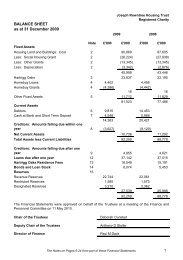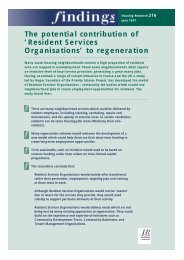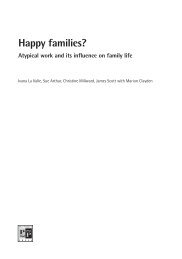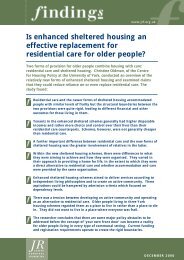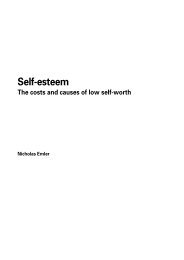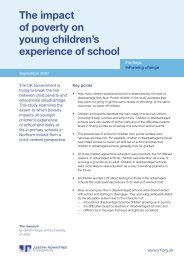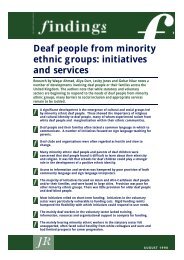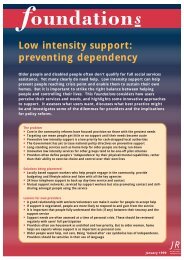Community participation - Joseph Rowntree Foundation
Community participation - Joseph Rowntree Foundation
Community participation - Joseph Rowntree Foundation
You also want an ePaper? Increase the reach of your titles
YUMPU automatically turns print PDFs into web optimized ePapers that Google loves.
<strong>Community</strong> <strong>participation</strong><br />
<br />
<br />
<br />
<br />
<br />
<br />
<br />
2,500 public governors of <strong>Foundation</strong> Hospital Trust Boards (once all Trusts go to<br />
<strong>Foundation</strong> status)<br />
5,000 members of Patient and Public Involvement Forums<br />
200 independent members of police authorities<br />
1,000 community representatives on Primary Care Trusts<br />
4,000 community representatives on Local Strategic Partnerships<br />
20,000 tenant representatives on housing association committees of<br />
management and tenant management boards<br />
80,000 residents on ward and area committees, and other forms of<br />
neighbourhood governance.<br />
Given that this equates to 1.2 per cent of the population of England, this suggests<br />
that The 1% Solution is calibrated reasonably well. The challenge, of course, is that<br />
at present these 480,000 roles are not being played by 480,000 different people. As<br />
we saw in our case studies, the same people often wear several hats. We have no<br />
way of calculating how many additional participants would be required to ensure that<br />
it was a different 1 per cent in each of the fields we have identified, but it is likely to<br />
be significant. Nevertheless, 1 per cent <strong>participation</strong> does not seem to be an<br />
unachievable goal to be striving for.<br />
A third way is to compare The 1% Solution in governance to what we know about<br />
levels of other kinds of civic activism. This gives us a sense of how realistic The 1%<br />
Solution is, because it offers some indication of the size of the pool of potential<br />
participants. We find that civic activism is typically around 5 per cent and that this<br />
figure declines as <strong>participation</strong> becomes more formal. The Home Office’s 2003<br />
Citizenship Survey found that 3 per cent of people engage in civic activities like<br />
attending a public meeting or contacting a public official 7 at least once a month. In a<br />
study of deprived neighbourhoods, Liz Richardson of the LSE found that around 3–5<br />
per cent of residents were actively involved in community-led and neighbourhoodfocused<br />
activities. 8 The <strong>Community</strong> Development <strong>Foundation</strong> has estimated that<br />
there are around six community organisations for every 1,000 adults in the UK. If<br />
those organisations had a typical core membership of around five to ten people, then<br />
their estimate of active involvement would be around 3–6 per cent. Nationally, 13 per<br />
cent of people say they have been actively involved (i.e. with some level of<br />
responsibility) in at least one local organisation in the last three years, although in<br />
52




